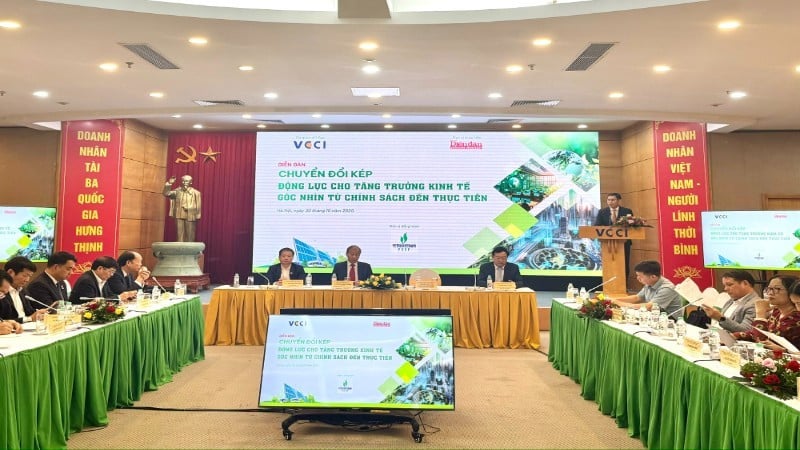
Speaking at the opening of the Forum, VCCI Vice President Hoang Quang Phong said that in the context of globalization and the 4.0 industrial revolution, dual transformation is not only a trend but has become a mandatory requirement for businesses to develop sustainably.
Simultaneously promoting digitalization and greening helps businesses increase productivity, save costs, reduce emissions and meet international environmental, social and governance (ESG) standards.
Citing data from the Ministry of Industry and Trade , Mr. Hoang Quang Phong emphasized that applying digital technology and smart energy management systems can help businesses reduce operating costs by 10%–15%, increase productivity by 20%, and reduce CO₂ emissions by 5%–8% each year.
Meanwhile, McKinsey & Company estimates that digital transformation in manufacturing can increase labor productivity by up to 30% and cut supply chain costs by 15%-20%.
Analyzing the relationship between digitalization and greening, Mr. Nguyen Hong Hien, Director of the Department of Science , Technology, Innovation and Digital Transformation (Central Policy and Strategy Committee) cited the OECD's report on "Digitalization and Green Growth" in 2023, showing that the application of digital technology, especially IoT, big data and artificial intelligence (AI) can help businesses reduce energy consumption and CO2 emissions by 10% to 20%, while significantly improving productivity and operational efficiency throughout the value chain.
"Digital transformation not only creates output growth, but also promotes green and sustainable growth - two goals that were previously considered separate, but now complement each other," Mr. Nguyen Hong Hien emphasized.
According to Mr. Nguyen Hong Hien, dual transformation contributes to implementing the Net Zero 2050 commitment and realizing the goal of rapid and sustainable development according to Resolution 57-NQ/TW of the Politburo .
Mr. Nguyen Hong Hien also proposed four directions of action to optimize resources and turn dual transformation into a growth driver. The first is "One infrastructure - two goals", which means investing in infrastructure that serves both digitalization and greening (such as green data centers, energy-saving cloud computing).
The second is the "two-in-one" strategy: Every digitalization project must have green criteria and vice versa. The third is to develop human resources with digital and green skills, forming "dual human capital". The fourth is green finance and innovation, taking advantage of green credit, innovation funds, and science and technology funds to support businesses.
Dual transformation starts with a change in mindset
From a policy perspective, Mr. Pham Hong Quat, Director of the Department of Market Development and Science and Technology Enterprises (Ministry of Science and Technology) said that the Government has issued the Green Growth Strategy, the National Digital Transformation Program and many policies to encourage innovation.
Dual transformation is essentially a business model transformation, not just the application of technology. Digital transformation is now shifting to AI transformation. This requires a strong change in the mindset, organizational model and internal capacity of the enterprise.
According to Mr. Quat, before talking about dual transformation in businesses, it is necessary to talk about transformation in the thinking and awareness of the business team itself, because technology is just a tool, people are the deciding factor.
From practice, Mr. Truong Van Cam, Vice President and General Secretary of the Vietnam Textile and Apparel Association, said that the textile and garment industry, with an export turnover of over 45 billion USD, is under great pressure from demanding markets such as the US, EU, and Japan.
Emphasizing that dual transformation is an inevitable path, Mr. Cam suggested that agencies improve green transformation standards and promote digital human resource training, especially in areas such as textile dyeing techniques, energy management and ESG. He also recommended reforming administrative procedures, shortening VAT refund time, and assessing environmental impacts to reduce the cost burden for businesses.
Mr. Mac Quoc Anh, Vice President of the Hanoi Association of Small and Medium Enterprises, said that there are currently more than 400,000 small and medium enterprises in the area, of which about 36% have used AI technology in their operations. However, there are still many difficulties in terms of capital, human resources and awareness.
Mr. Mac Quoc Anh proposed that VCCI and ministries need to build a model digital and green roadmap for small and medium enterprises. Large enterprises with successful dual transformation should share their processes with small and medium enterprises. At the same time, there should be systems for evaluating and certifying digital and green enterprises so that consumers can distinguish between products and enterprises with digital and green transformation certification.
Meanwhile, Ms. Pham Bich Hong, Deputy General Director of Garment 10 Corporation, proposed having a green financial support mechanism, green credit packages with preferential interest rates; at the same time, institutionalizing and standardizing national ESG, maximally harmonizing with international standards to reduce compliance costs for businesses as well as increase competitiveness.
Ms. Hong also emphasized the role of investment in data infrastructure and human resource training, along with policies to encourage large enterprises to share data and dual transformation experience with smaller enterprises.
Ms. Nguyen Thi Thuy, Vice President of MISA Joint Stock Company, said that dual transformation is contributing to promoting economic growth. For businesses, it is important to change awareness, leadership thinking and corporate culture.
Digital transformation requires financial transparency and compliance with legal regulations; green transformation requires long-term investment. MISA is committed to accompanying Vietnamese enterprises with integrated digital platforms, helping enterprises to digitalize comprehensively, automate processes, make data transparent and easily access green capital.
Source: https://nhandan.vn/hien-thuc-hoa-nghi-quyet-57-bang-chuyen-doi-kep-post919387.html


![[Photo] The Third Patriotic Emulation Congress of the Central Internal Affairs Commission](https://vphoto.vietnam.vn/thumb/1200x675/vietnam/resource/IMAGE/2025/10/30/1761831176178_dh-thi-dua-yeu-nuoc-5076-2710-jpg.webp)
![[Photo] Prime Minister Pham Minh Chinh attends the 5th National Press Awards Ceremony on preventing and combating corruption, waste and negativity](https://vphoto.vietnam.vn/thumb/1200x675/vietnam/resource/IMAGE/2025/10/31/1761881588160_dsc-8359-jpg.webp)


![[Photo] General Secretary To Lam attends the Vietnam-UK High-Level Economic Conference](https://vphoto.vietnam.vn/thumb/1200x675/vietnam/resource/IMAGE/2025/10/30/1761825773922_anh-1-3371-jpg.webp)





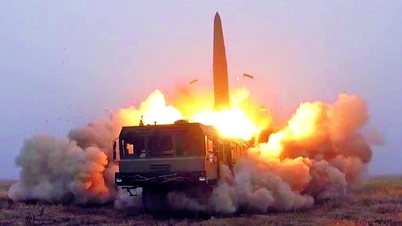







![[Video] Increasing authority and responsibility in state secret protection activities](https://vphoto.vietnam.vn/thumb/402x226/vietnam/resource/IMAGE/2025/10/31/1761882189303_luat-bi-mat-nha-nuoc-8267-jpg.webp)


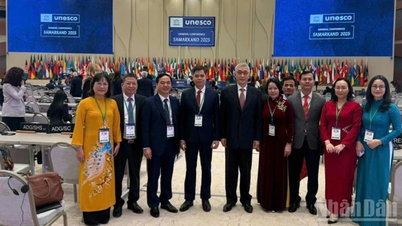

![[Photo] Prime Minister Pham Minh Chinh attends the 5th National Press Awards Ceremony on preventing and combating corruption, waste and negativity](https://vphoto.vietnam.vn/thumb/402x226/vietnam/resource/IMAGE/2025/10/31/1761881588160_dsc-8359-jpg.webp)
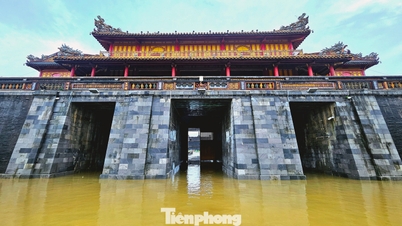

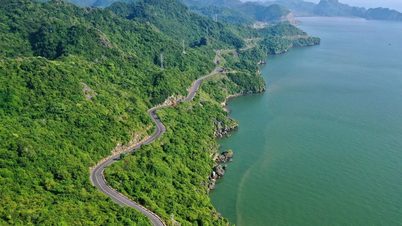












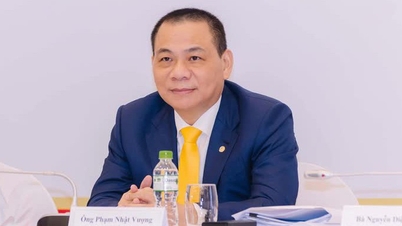








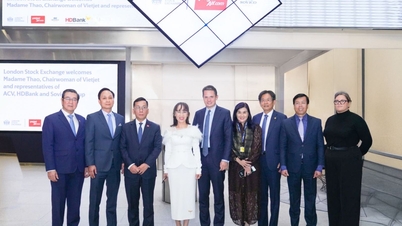



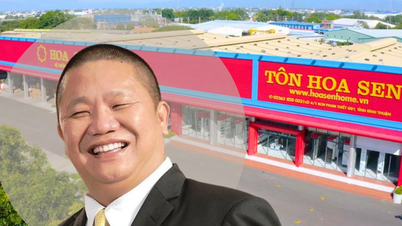








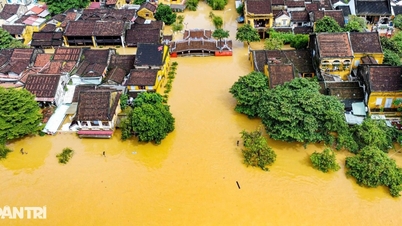
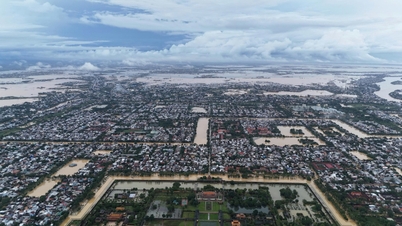





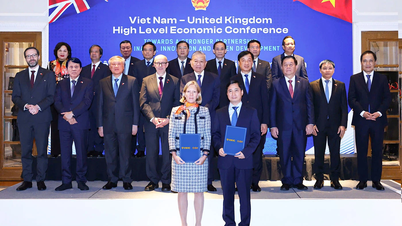
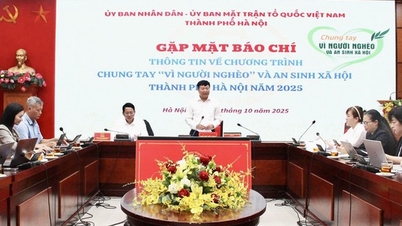
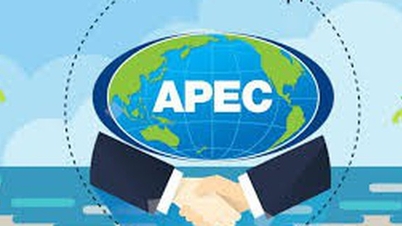
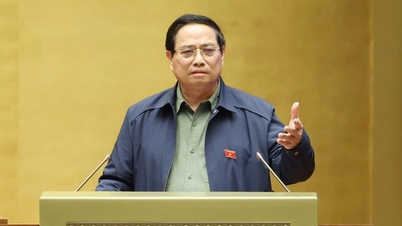


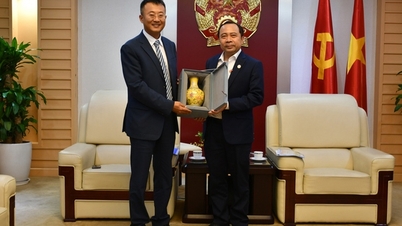
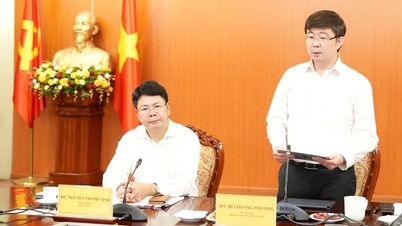
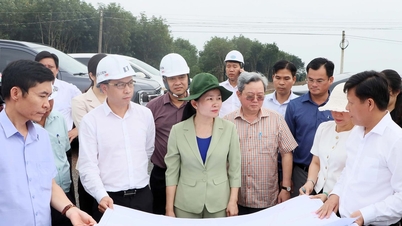

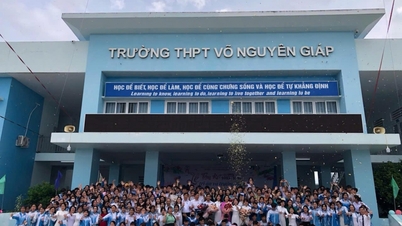



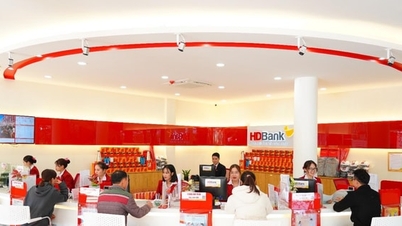

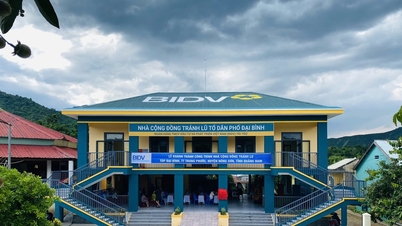

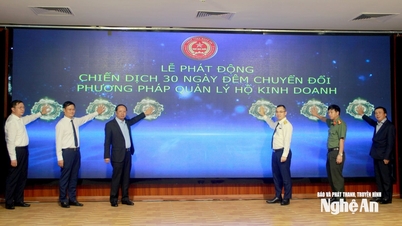












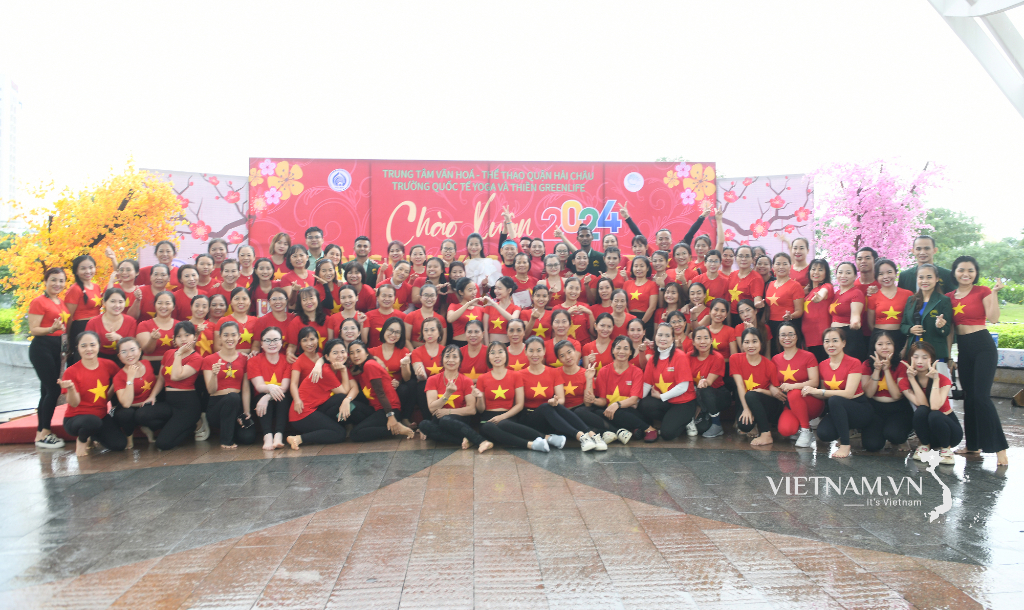



Comment (0)